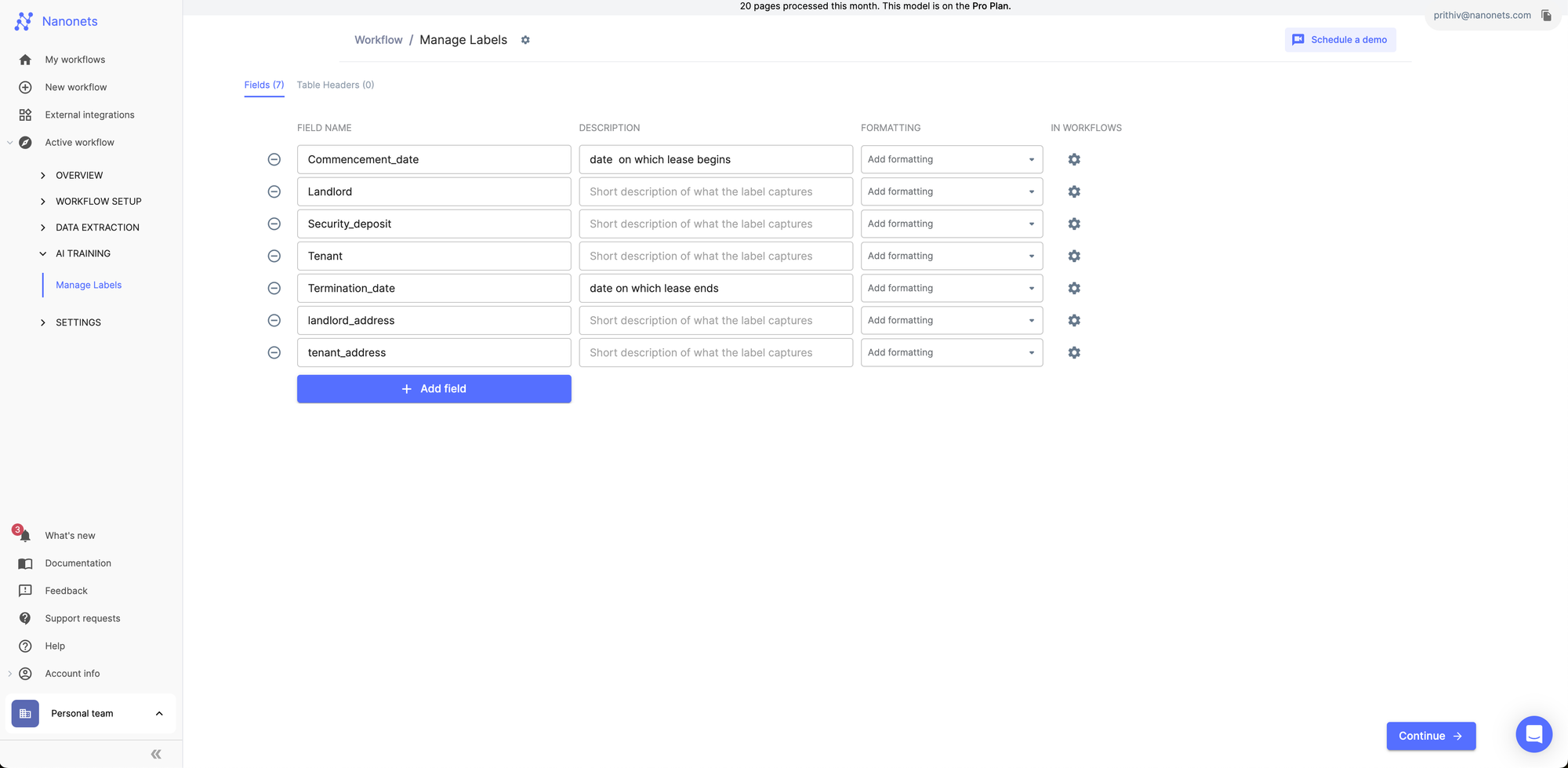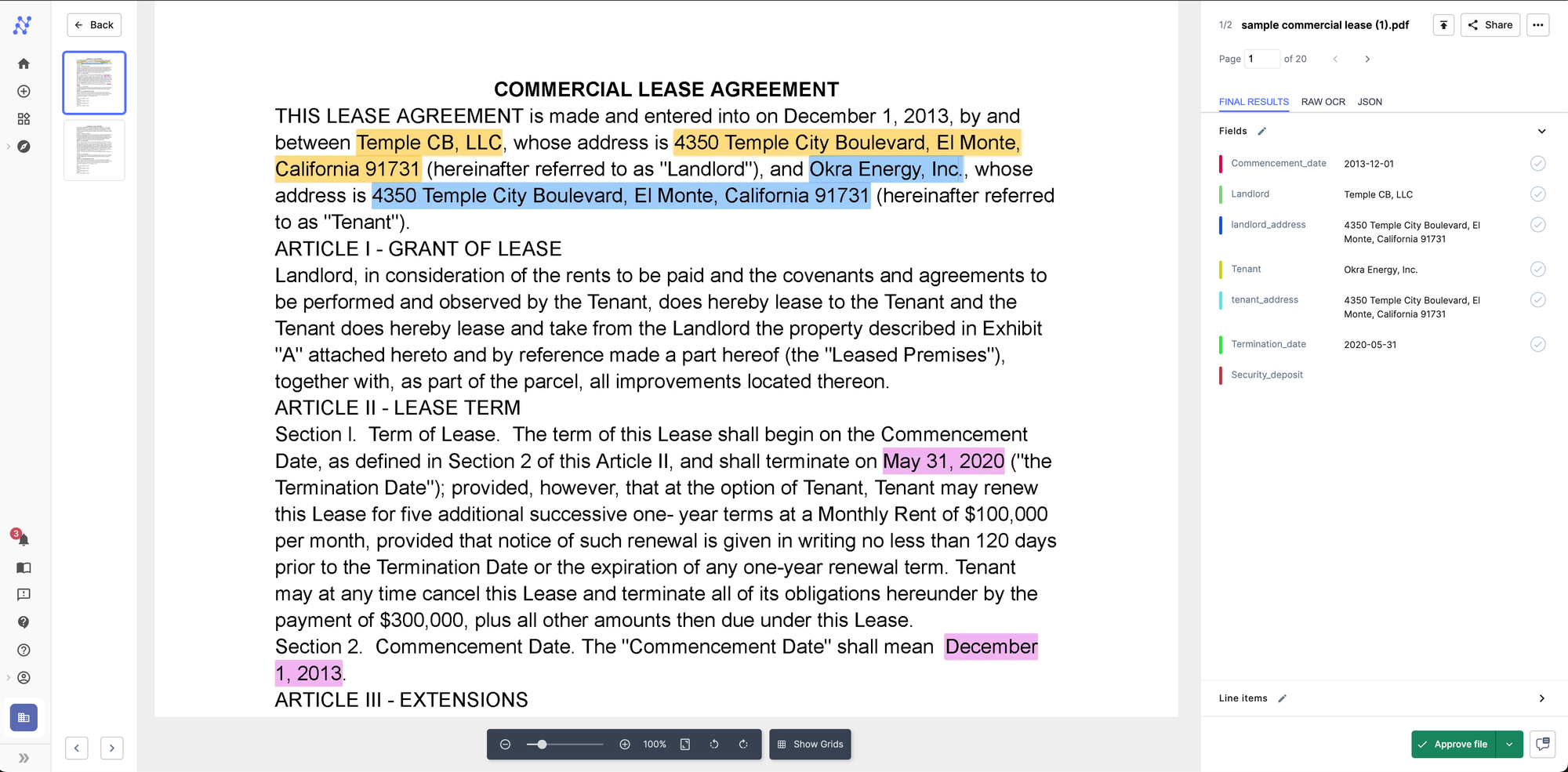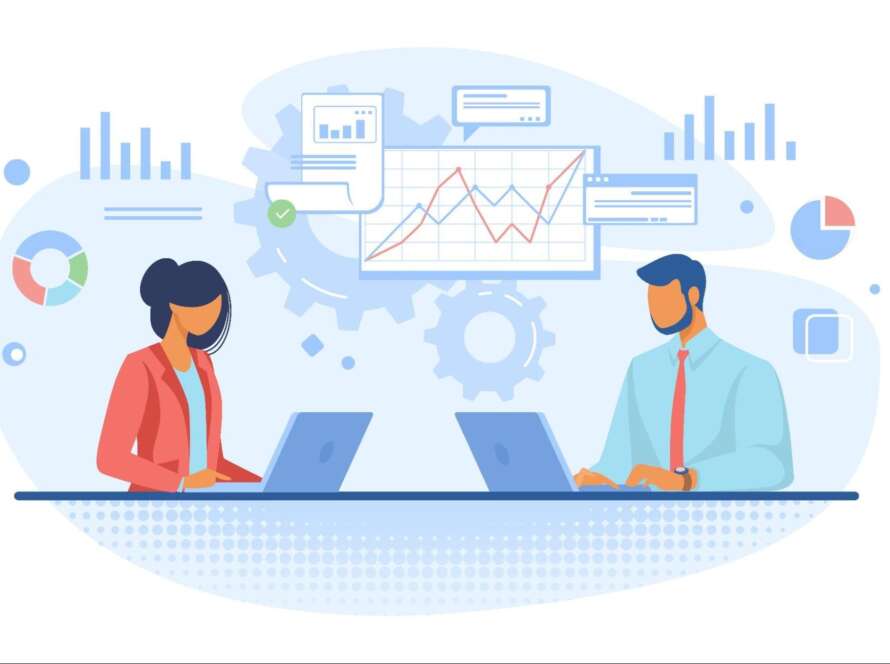Managing and reviewing contracts throughout their lifecycle is quite a challenging task for businesses. Especially since contract data is often scattered across different systems or departments – making it hard to get a quick comprehensive view of contractual obligations.
Consider the volume of contracts that businesses typically deal with, the effort required to manually review dense unstructured legal information, and the (legal) expertise required to interpret the data within contracts.
It’s easy to see why managing contracts can become extremely challenging!
Contract data extraction solutions can help address some of these key challenges by:
- reducing the time spent manually reviewing contracts
- providing relatively quicker access to critical contract information
- enabling proactive management of contract obligations and deadlines
In this article, we will learn more about contract data extraction, challenges in extracting data from contracts, some popular methods of contract data extraction, and find out how it can streamline various stages of the contract lifecycle.
Contract data extraction is the process of automatically identifying and pulling out specific/relevant information from contracts or legal documents.
This process transforms unstructured contract text into structured data that is much more convenient to analyse.This also helps businesses to find and use key details hidden in their contracts, making it easier to understand and manage their agreements.
Here are a few use cases that largely focus on analysing contracts along with examples of key contractual data:
| Use cases that require contract analysis | Key contract data that must be extracted |
|---|---|
| 1. Merger and acquisition | Party names, contract values, termination clauses, change of control provisions etc. |
| 2. Vendor management | Pricing terms, renewal dates, service level agreements (SLAs), liability clauses etc. |
| 3. Lease administration | Lease terms, rent amounts, renewal options, maintenance responsibilities etc. |
| 4. Employment contracts | Compensation details, non-compete clauses, benefits information, termination conditions etc. |
Why is it challenging to capture data from contracts?
Given the legal nature of contracts, a high degree of accuracy is extremely crucial, leaving very little room for error.
But no contract data extraction solution, even automated or AI-powered ones, can guarantee 100% data extraction accuracy!
Here are a few reasons why:
- contracts, like most business documents, come in many different formats, layouts, and structures.
- legal documents and contracts often use complex language, industry-specific terminology and ambiguous legalese.
- different organizations may use varying terms or context-dependent information to describe the same concepts.

Despite the challenges covered earlier, contract data extraction solutions (especially automated ones) are being increasingly adopted by businesses that are looking to move away from manual contract reviews.
These solutions leverage a combination of NLP, LLMs and AI to read and understand contracts to identify key data within them. These tools can be broadly grouped into two types:
- Specialised LLMs trained on legal data such as Harvey AI or Robin AI that are primarily used for legal review and contract analysis
- AI-powered rule-based intelligent document processing (IDP) solutions such as Nanonets that are mostly used for automating existing contract data extraction workflows
Most LLMs and generative AI-based solutions are prone to hallucinations – especially when it encounters unknown data.
That’s the reason you can’t use Chat GPT or Claude with absolute certainty for legal reviews or contract analysis.
On the other hand, LLMs trained on legal data and case law materials have a deeper and much better understanding of legal terminology and contract structures, and are less likely to hallucinate or make stuff up.
Since such LLMs are trained on large data sets of legal data, they have excellent contextual understanding. They can even understand clauses within the larger context of a contract.
They are ideal for contract analysis, legal research, and legal document drafting; saving time that would otherwise be spent on manual search. Here are a few examples of the top LLMs trained on legal data or AI contract review software:
- Harvey AI: A legal-focused AI using GPT technology
- Robin AI: A co-pilot for legal tasks
- LEGAL-BERT: A BERT-based machine learning model trained on hundreds of thousands of legal documents
- Lexis+ AI: A personalised legal AI assistant
- Casetext’s CoCounsel: An AI legal assistant powered by GPT-4
✅
1. Significantly reduces time spent on contract review and data extraction
2. Handles various contract types and formats more effectively than rule-based systems
3. Identifies patterns and insights across large contract portfolios
4. Creates searchable databases of contract information that can be shared across teams and departments
❌
1. Has a potential for misinterpretation, especially with complex or unusual clauses that it hasn’t encountered before
2. Requires time/expertise to properly implement and fine-tune to maintain accuracy
3. May not seamlessly integrate with existing contract management systems and workflows
4. High initial investment for licensing, implementation and ongoing maintenance
Here’s a generic tutorial on how to use LLMs trained on legal data such as Harvey AI or Robin AI to extract data from contracts:
- Ensure the contract is in a digital, machine-readable format (e.g., PDF, Word, or plain text).
- Identify the specific data points you need to extract (e.g., parties, dates, terms, clauses) and specify a structured format for the output (e.g., JSON, CSV).
- Create and fine tune prompts that instruct the LLM to extract specific data. For example: “Extract the following information from this contract:
- Parties involved
- Contract start date
- Contract end date
- Payment terms
- Termination clauses”
- Input the contract text and your prompts into the LLM. Some platforms may offer APIs for this step!
💡
Look out for missing information or incorrectly extracted information.
- Use the results to further refine your prompts and improve accuracy.
💡
Handling such exceptions might require custom prompts (just for these unique contracts) or routing them for good old manual review!
More often than not, businesses looking for a contract data extraction solution, require something that can fit into their existing setup or workflows.
Ideally no one prefers a solution that requires them to ditch an existing contract management system or make a ton of modifications to existing processes.
Rule-based IDP solutions do a great job of automating contract data extraction workflows without disturbing existing processes. They serve as an ideal middleware between unstructured contracts and contract management systems (or legal ERPs).
✅
1. Produces consistent structured data outputs – doesn’t hallucinate!
2. Integrates with existing contract management systems and feeds extracted data directly into other business processes
3. Handles different document types beyond just contracts – can be used for a wider range of business use cases
4. Far easier to train or improve models to handle exceptions or corner cases
❌
1. Struggles with complex legal language or “unseen” contract formats that require deep legal analysis
2. Doesn’t generate summaries or can’t explain contract terms
Here’s a quick guide on how to use Nanonets, a popular AI-based IDP software, to extract data from contracts. For this example, we’ll extract data from a commercial lease agreement.
- Signup on Nanonets, login to your account, click on “New workflow” and create a “Zero training model”.
- Specify the data points you want extracted from your contract. For example, here are the data points I want to extract from a sample commercial lease agreement:
- Landlord
- Tenant
- Landlord address
- Tenant address
- Commencement date
- Termination date

- Upload your contract and wait for a few seconds. Nanonets AI will display the key contractual data like so:

- You can correct or modify the data extracted by the AI and it will “learn” from those corrections/modifications and keep getting better.
IDP solutions like Nanonets also allow you to build end-to-end automated workflows on top of robust data extraction capabilities. You can:
- auto-capture incoming contracts via email, hot folders or API
- refine the extracted data through custom data actions
- customise the final structured output
- set up approvals or validations for the extracted contract data
- and finally export it to a downstream contract management software or ERP
Here’s a quick overview of these features on Nanonets:



